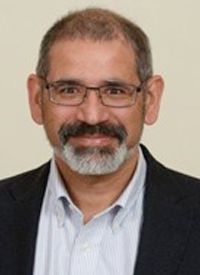Article
Lymph Node/LOH Status Predict Survival in Wilms Tumor
Author(s):
In patients with stage III favorable-histology Wilms tumor, negative nodal involvement and the absence of loss of heterozygosity at chromosomes 1p and 16q were predictors for event-free survival and overall survival.
Conrad V. Fernandez, MD

Conrad V. Fernandez, MD
In patients with stage III favorable-histology Wilms tumor, negative nodal involvement and the absence of loss of heterozygosity (LOH) at chromosomes 1p and 16q were predictors for event-free survival (EFS) and overall survival (OS), according to results from the COG AREN0532 study.
All patients (N = 535) underwent after either primary or delayed nephrectomy, and were then treated with vincristine, doxorubicin, and dactinomycin (DD4A) along with concurrent flank (10.8 Gy) or whole abdominal (10.5 Gy) radiation, with a 10.8- or 10.5-Gy boost to gross residual tumor, respectively.
At a median follow-up of 5.2 years, patients with negative nodal involvement and absence of LOH 1p or 16q, had a 4-year EFS rate of 96.7% (95% CI, 93.5-99.9) compared with 73.8 (95% CI, 58.7-88.9) for those positive for both factors. The 4-year OS rates were 99.4% (95% CI, 98-100) and 92.4% (95% CI, 83.1-100), respectively.
“When lymph node status and LOH status were combined, a strong predictor of excellent EFS and OS emerged when both were absent, and conversely, a relatively poorer outcome was identified if both were present,” corresponding author Conrad V. Fernandez, MD, Department of Pediatrics, IWK Health Centre, Dalhousie University, Halifax, Nova Scotia, and coauthors wrote. “This conclusion still holds whether or not patients with nodes identified at delayed nephrectomy (n = 5) were included.”
Investigators observed 66 first events—62 of which were relapses and 2 were deaths from other causes—and 18 deaths. Fifty-eight of those first events occurred within 2 years of diagnosis. Among patients who experienced relapse, median time to relapse was 11.9 months (range, 0.5-65.4) from study entry. Ten patients relapsed within 7 months postnephrectomy.
Overall 4-year EFS was 88% (95% CI, 85%-91%) and OS estimates were 97% (95% CI, 95%-99%), respectively. Better EFS was associated with negative lymph node status (P <.01) and absence of LOH 1p or 16q (P <.01), but not with gross residual disease or peritoneal implants.
There were 151 patients in the study with positive nodal involvement and 236 with negative lymph node status. Fernandez et al noted a pattern of poorer 4-year EFS for patients with positive lymph nodes (82%; 95% CI, 74.9-89) compared with patients who had with negative lymph nodes (94%; 95% CI, 90.2-97.4). However, nodal status did have a large effect on OS.
There were 148 patients without lymph node sampling in the study and 387 with lymph node sampling. Four-year EFS tended to be superior for patients with lymph node sampling (89%; 95% CI, 85.6-92.8) than for those without (84%; 95% CI, 77.3-91.4).
There was no difference in 4-year EFS or OS for patients who underwent upfront nephrectomy (n = 419; 89%; 95% CI, 85-92.1) compared with those who received preoperative chemotherapy (n = 116; 85%; 95% CI, 77.6-93.0).
Similarly, there was no impact on 4-year EFS for patients who had gross residual disease, including those who received preoperative chemotherapy, versus those who had no gross residual disease.
“Given the serious potential late effects of doxorubicin, we believe it essential to examine strategies to eliminate anthracyclines in patients with an excellent prognosis. At the same time, prevention of relapse in higher risk patients is an important goal,” Fernandez wrote. “Taken together, the COG Renal Tumors Committee is strongly considering using a prognostic algorithm of upfront nephrectomy when feasible, incorporating LOH 1p/16q status and 1q gain to identify patients who merit more intensive therapy. We are also planning to study the omission of doxorubicin in patients who lack these risk factors.”
Fernandez CV, Mullen EA, Chi YY, et al. Outcome and prognostic factors in stage III favorable-histology Wilms tumor: A report from the Children’s Oncology Group study AREN0532 [published online December 6, 2017]. J Clin Oncol doi: 10.1200/JCO.2017. 73.7999.






%20(2)%201-Recovered-Recovered-Recovered-Recovered-Recovered.jpg?fit=crop&auto=format)

%20(2)%201-Recovered-Recovered-Recovered-Recovered-Recovered.jpg?fit=crop&auto=format)
%20(2)%201-Recovered-Recovered-Recovered-Recovered-Recovered.jpg?fit=crop&auto=format)